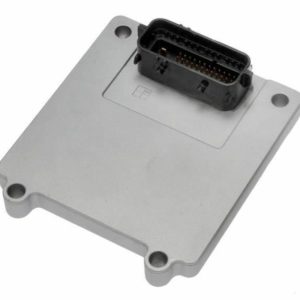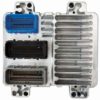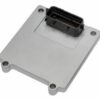Is Your 2006 Pontiac Pursuit Shifting Erratically?
If you’re dealing with sudden harsh shifts, getting stuck in one gear, or seeing that dreaded check engine light, your Transmission Control Module (TCM) is the likely culprit. As the electronic brain of your automatic transmission, the T42 TCM manages every gear change, torque converter lockup, and line pressure adjustment. When it fails, your car’s drivability suffers dramatically. In my 20+ years as a technician, I’ve seen countless GM vehicles, from workhorse Silverado trucks to daily drivers like the Pontiac Pursuit, sidelined by a faulty TCM. The symptoms are often mistaken for a major mechanical failure, but the fix can be surprisingly straightforward.
Diagnosing the Problem: Common Signs of a Bad TCM
A failing TCM will give you clear warning signs. If you’re experiencing any of the following, it’s time to inspect your module:
- ✔ Harsh or Delayed Shifting: The car may slam into gear or hesitate before engaging, especially between 1st and 2nd gear.
- ✔ Stuck in Limp Mode: The transmission defaults to a single gear (usually 2nd or 3rd) to prevent further damage, resulting in poor acceleration and high RPMs on the highway.
- ✔ Check Engine Light with Transmission Codes: You’ll often see a generic transmission fault code like P0700, frequently accompanied by specific solenoid codes (e.g., P0751, P0756).
- ✔ No Communication with Scan Tool: In some cases, the module fails completely and won’t communicate with a diagnostic scan tool.
From the Shop Floor: A Real-World Scenario
“A customer’s 2007 Cobalt, which shares the same platform and TCM as the Pursuit, came into my shop last month. It was stuck in 3rd gear, and the owner was convinced he needed a full transmission rebuild. After hooking up the scanner, I pulled a P0700 and a handful of solenoid circuit codes. Instead of tearing down the transmission, I first checked the TCM. Sure enough, after swapping in a pre-programmed module, all the codes cleared, and the car shifted perfectly. It saved the customer over a thousand dollars and a lot of unnecessary work.”
The Plug-and-Play Solution: A Pre-Programmed 2006 Pursuit Transmission Control Module
Forget expensive dealership visits and the hassle of finding a shop that can program a new module. This T42 TCM, part number 24234503, arrives at your door pre-programmed to your vehicle’s specific VIN. We load the latest GM software updates, ensuring it communicates flawlessly with your car’s Powertrain Control Module (PCM) right out of the box. This process restores original factory performance and resolves the electronic issues that cause poor shifting.
Key Features and Benefits:
- ✔ VIN Programmed for Your Pursuit: No extra programming needed. Just install it, and you’re ready to go.
- ✔ Restores Smooth Shifting: Eliminates harsh engagement, slipping, and delayed shifts by restoring precise electronic control.
- ✔ Fixes Common DTCs: Directly addresses fault codes related to solenoids, pressure switches, and communication errors.
- ✔ Built to OEM Standards: Engineered for reliability and longevity, backed by our one-year warranty.
- ✔ No Core Charge: Keep your old part. There’s no need to worry about shipping a core back to us.
Easy Installation Guide: Get Back on the Road in Under 30 Minutes
For the 2006 Pontiac Pursuit, the TCM is conveniently located. You don’t need a vehicle lift or specialized tools to perform this replacement.
- Safety First: Disconnect the negative terminal from your car’s battery to prevent any electrical shorts.
- Locate the TCM: Open the hood and find the TCM mounted to the driver’s side (LH) strut tower, near the firewall.
- Disconnect the Harnesses: Carefully unclip the two large electrical connectors from the module. Inspect the pins for any corrosion and clean them with an electronics cleaner if necessary.
- Remove the Old Module: Unbolt the TCM from its mounting bracket. It’s typically held on by a few small bolts (7mm or 10mm).
- Install the New Module: Bolt your new, pre-programmed TCM into place, reconnect the two electrical harnesses until they click securely, and then reconnect your battery.
- Final Steps: Start the vehicle. The check engine light should be off. It’s a good practice to use a basic scan tool to clear any stored historical codes to finalize the repair.



